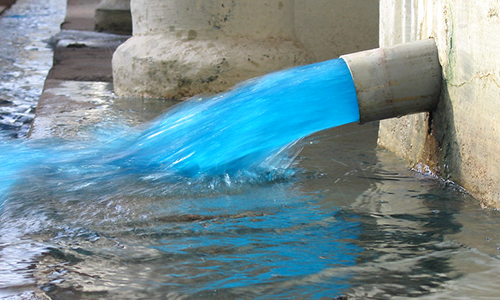
Threads of Change: How Fashion Can Conquer Sustainability Challenges
- Jan 5, 2025
- 9 months ago
- 191 Views
The fashion industry, a constant source of inspiration and self-expression, also faces a harsh reality – its significant environmental impact. From excessive water usage in cotton cultivation and dyeing to textile waste overflowing landfills, the industry leaves a considerable footprint on our planet. But fear not, fashionistas! The tide is turning. A wave of innovation and eco-consciousness is washing over the industry, paving the way for a more sustainable future.
The Glaring Challenges: A Deeper Look
Let's delve deeper into the fashion industry's environmental woes:
Water Consumption
Textile production is a major water guzzler. Cotton, a popular fabric choice, requires vast amounts of water to grow, especially in conventional farming practices. According to the World Wildlife Fund, it takes an estimated 2,700 liters of water to produce just one cotton T-shirt.
Chemical Pollution

Harmful chemicals used in dyeing and finishing processes pollute waterways and harm ecosystems. These chemicals can also pose health risks to garment workers and consumers.
Microplastic Shedding
Synthetic fabrics like polyester release microplastics when washed. These tiny plastic fibers enter our waterways and oceans, contaminating the food chain and posing a threat to marine life.
Textile Waste
Mountains of discarded clothing end up in landfills, taking centuries to decompose and releasing harmful methane gas in the process. A 2021 report estimates that the fashion industry produces roughly 92 million tons of textile waste annually.
Shifting to Sustainable Solutions: A Runway of Innovations
Thankfully, the fashion world is embracing a more sustainable approach. Here are some key changes making a difference:
Circular Economy
This model focuses on keeping existing materials in use for longer. Initiatives like clothing rental services, popularized by certain companies, vintage clothing stores, and garment recycling programs promote product life extension and resource conservation.
Sustainable Materials
Brands are exploring eco-friendly alternatives to conventional materials. Organic cotton, cultivated without harmful pesticides and fertilizers, is a more sustainable choice. Recycled polyester, made from plastic bottles and other post-consumer waste, reduces dependence on virgin resources. Tencel, a fabric derived from wood pulp, offers a luxurious feel with a lower environmental impact. Hemp, a fast-growing and naturally pest-resistant plant, is another promising sustainable material gaining traction.
Ethical Manufacturing
Consumers are increasingly conscious of labor practices within the fashion supply chain. The Sustainable Apparel Coalition works to ensure ethical and sustainable practices throughout the production process, from fair wages for garment workers to safe working conditions.
Transparency & Traceability
Brands are becoming more transparent about their production processes and sourcing. This allows consumers to make informed choices about the clothes they buy. Look for brands that publish detailed information about their supply chains and sustainability efforts.
The Power of Conscious Consumers: Building a Sustainable Wardrobe
While the industry undergoes a transformation, the power ultimately lies in our hands – the consumers. Here's how you can contribute to a more sustainable fashion scene;
Shop Less, Choose Well
Avoid impulse purchases and invest in quality pieces that will last longer. Opt for timeless styles that won't go out of fashion quickly. Consider the versatility of a garment – can it be dressed up or down for multiple occasions?
Embrace Pre-Loved Fashion
Give pre-owned clothing a second life by shopping at vintage stores or online consignment shops. You'll find unique treasures while reducing your environmental footprint and extending the lifespan of existing garments.
Care for Your Clothes
Proper washing and storage extend garment lifespan. Follow care instructions on labels – washing in cold water and air drying can significantly reduce energy consumption and wear and tear. Invest in natural cleaning products to minimize environmental impact.
Support Sustainable Brands
Do your research and seek out brands committed to ethical and sustainable practices. Look for certifications like Fair Trade, GOTS (Global Organic Textile Standard), or Oeko-Tex, which ensure responsible production processes and eco-friendly materials. Luxury brands like Stella McCartney are pioneers in sustainable fashion, offering beautiful pieces with a focus on environmental responsibility.
Beyond the Closet: A Holistic Approach
Sustainable fashion goes beyond just the clothes you wear. Here are some additional ways to make a difference:
Support Sustainable Dyeing Practices
Look for brands that utilize natural dyes or low-impact dyeing processes that minimize water pollution.
Advocate for Change
Use your voice to raise awareness about sustainable fashion issues. Contact your favorite brands and ask about their sustainability practices. Support legislation that promotes ethical and environmentally responsible practices in the fashion industry.
Embrace Minimalism
Challenge yourself to buy less overall. Consider the longevity and versatility of each piece before purchasing.
A Fashion Revolution in the Making
Sustainable fashion isn't about compromising on style. It's about looking good and feeling good knowing you're making a positive impact on the planet. By embracing these changes, both the industry and consumers can create a future where fashion and sustainability go hand-in-hand. This revolution requires collaboration – from innovative designers and manufacturers to conscious consumers who make informed choices. Let's rewrite the narrative and make sustainable fashion the new standard!
Remember, every step towards a more sustainable wardrobe is a step in the right direction. So, keep learning, keep exploring, and keep rocking your style with a conscience!






